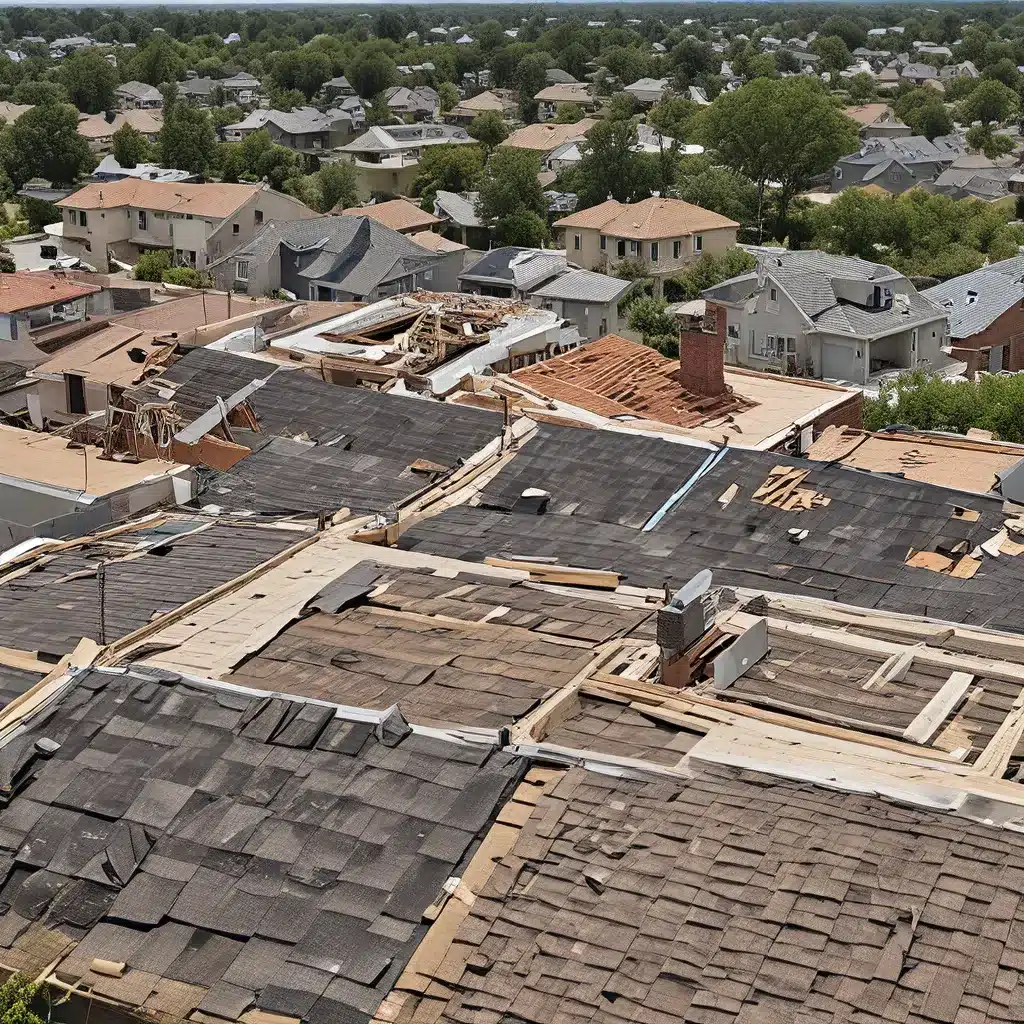
As a seasoned roofing contractor, I’ve seen my fair share of natural disasters wreak havoc on homes across the country. From devastating hurricanes along the Gulf Coast to tornado outbreaks in the Midwest, it’s become painfully clear that the traditional approach to roofing and home construction simply isn’t enough to withstand the increasing frequency and intensity of extreme weather events.
But what if I told you there’s a solution that can significantly improve a home’s resilience against these natural disasters? Enter the FORTIFIED Home program, a groundbreaking initiative developed by the Insurance Institute for Business & Home Safety (IBHS). This innovative approach to building and retrofitting homes is designed to safeguard families and their most valuable investment – their home.
Fortifying Homes for the Unpredictable
Let’s face it: the weather is becoming more and more unpredictable. Gone are the days when we could rely on a few severe storms per year. Nowadays, it seems like every season brings a new wave of destructive weather events, from hurricane-force winds and torrential rains to hail the size of golf balls. And the damage these storms can inflict is staggering, with $1 billion or more in losses for over 50 storms since 2015, according to the Fine Homebuilding report.
But the FORTIFIED Home program is here to change the game. By incorporating a range of resilient building materials and construction techniques, these homes are engineered to withstand the harshest conditions Mother Nature can throw their way. From impact-resistant windows and fully sheathed walls to a continuous load path that ties the roof to the foundation, every aspect of a FORTIFIED Home is designed to work together as a cohesive system – one that can stand up to whatever nature decides to unleash.
Weathering the Storm: Real-World Proof
The proof of the FORTIFIED Home’s effectiveness is in the pudding, or rather, in the homes that have weathered some of the most devastating storms in recent memory. Take, for example, the testimonial from a resident of Mexico Beach, Florida, whose home survived Hurricane Michael, a Category 5 storm that ravaged the surrounding area.
But the success stories don’t stop there. In the aftermath of Hurricane Sally, which made landfall near Gulf Shores, Alabama, with winds of 110 mph, a local roofing contractor reported that his company’s FORTIFIED Roofs had zero damage – a remarkable feat considering the widespread destruction in the area.
These real-world examples demonstrate the power of the FORTIFIED Home standard, which is based on more than two decades of building science research conducted by the IBHS. By putting their findings into practice, homeowners can rest assured that their homes are equipped to withstand the worst that Mother Nature has to offer.
Raising the Bar for Resilient Construction
But the FORTIFIED Home program isn’t just about protecting individual homes; it’s about transforming entire communities and creating a culture of resilience. As more and more states, like Oklahoma, are incentivizing the use of FORTIFIED standards, the demand for experienced roofers and builders trained in these techniques is surging.
And it’s not just the insurance industry that’s recognizing the value of FORTIFIED construction. Disaster response organizations, like Team Rubicon, are also incorporating these standards into their rebuilding efforts, ensuring that the homes they restore are better equipped to withstand future disasters.
But the real impact of the FORTIFIED Home program goes beyond just the physical structure of the home. By making homes more resilient, we’re also protecting the well-being of families who no longer have to worry about being evacuated to a shelter or spending months in temporary housing after a storm. And as local businesses can more quickly recover, entire communities are better positioned to bounce back from disaster.
The Cost of Resilience: A Worthwhile Investment
I know what you’re thinking: “But how much is all this going to cost me?” It’s a fair question, and the reality is that building or retrofitting a home to FORTIFIED standards does come with a higher price tag. Estimates suggest that a FORTIFIED Roof can cost 15-25% more than a conventional roof, while a FORTIFIED Gold-certified new build may be 10-15% more than a standard home.
However, I would argue that this is a worthwhile investment for homeowners, especially those in high-risk areas. Not only do FORTIFIED Homes offer increased protection against natural disasters, but they also come with the potential for insurance discounts that can offset the higher upfront costs. And let’s not forget the peace of mind that comes with knowing your home can withstand the next big storm.
As Fine Homebuilding senior editor Patrick McCombe points out, the higher purchase price for a more resilient home in a high-risk location should be offset by lower insurance premiums over the life of the structure. And in some cases, if you don’t meet certain resilience standards, you may not even be able to get insurance coverage at all.
Embracing the Future of Roofing and Home Construction
So, what does the future hold for the roofing industry and home construction? Well, if the FORTIFIED Home program is any indication, it’s all about building resilience. As extreme weather events become more and more common, homeowners and communities can no longer afford to rely on outdated construction methods.
Southern Roofing Co. is proud to be at the forefront of this resilience movement, offering FORTIFIED-certified roofing services and working with homeowners to ensure their homes are prepared for whatever Mother Nature has in store. By incorporating the latest materials and techniques, we’re not just repairing roofs – we’re fortifying homes and strengthening communities against the unpredictable.
So, if you’re ready to take your home’s resilience to the next level, I encourage you to explore the FORTIFIED Home program and see how it can transform your property into a fortress against natural disasters. With the right approach, we can build a future where homes don’t just withstand the storm – they emerge from it stronger than ever.